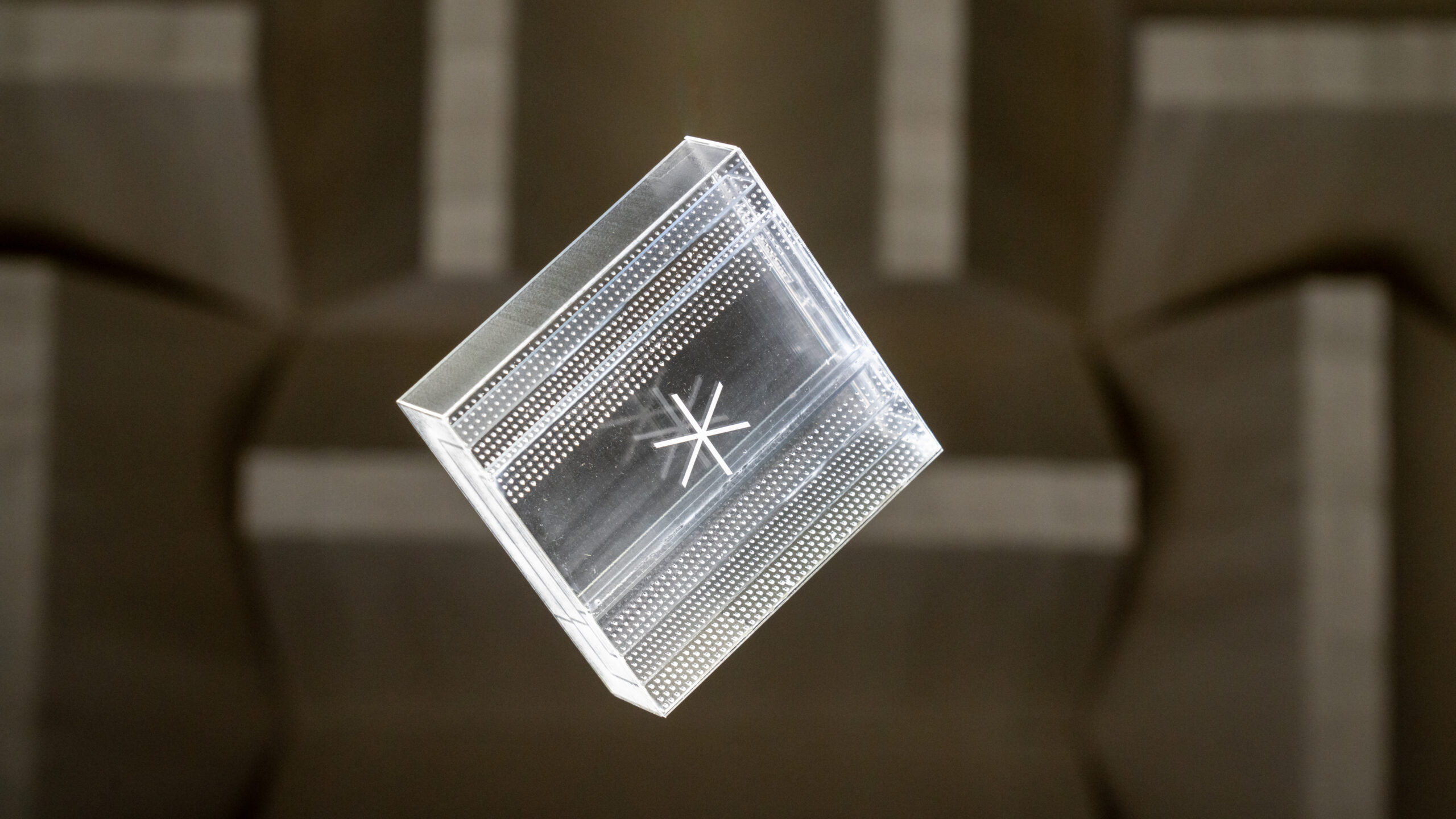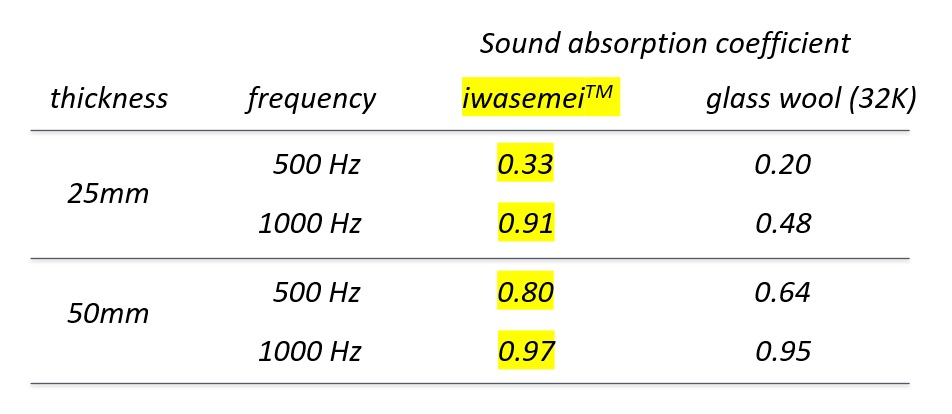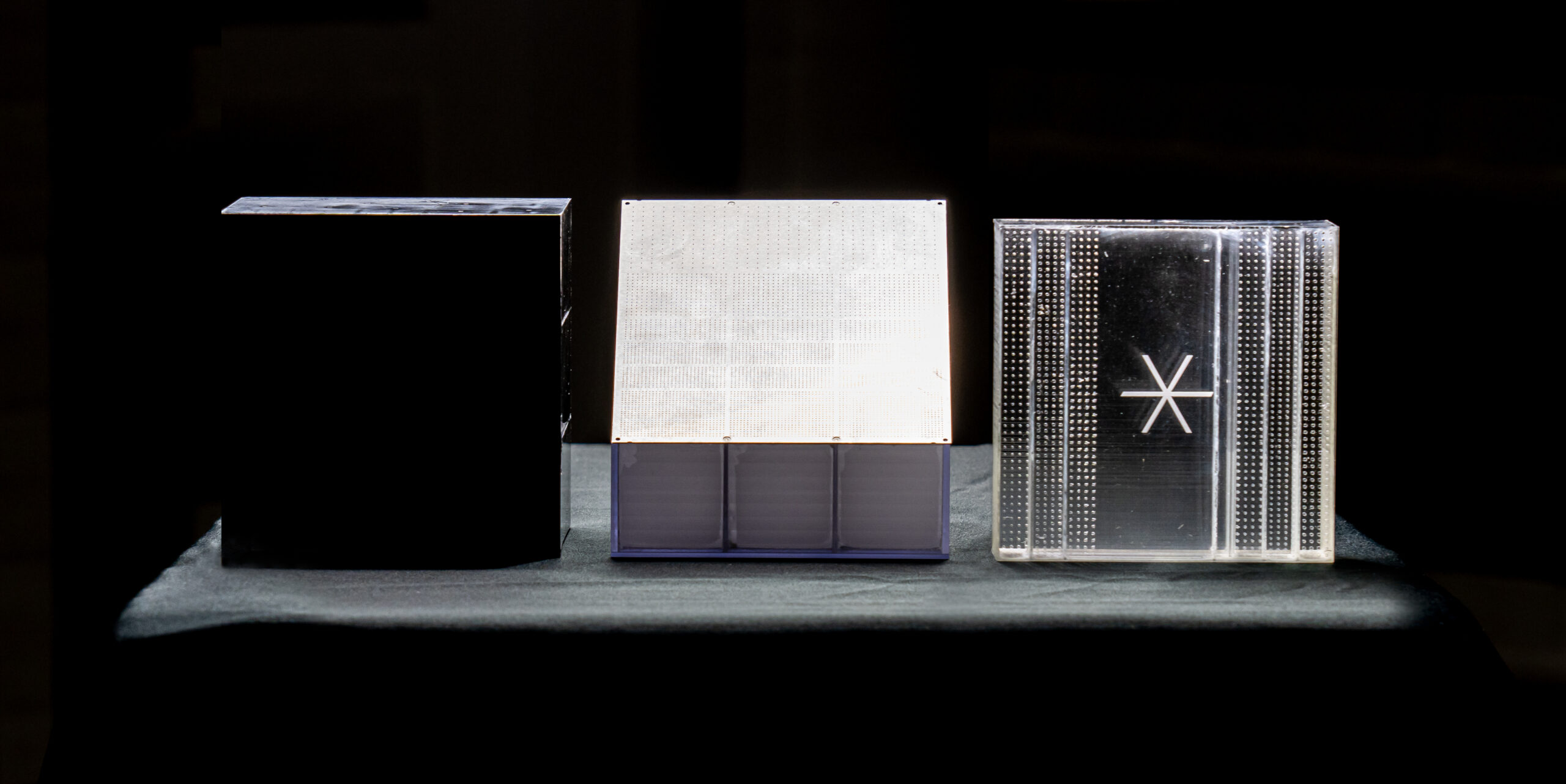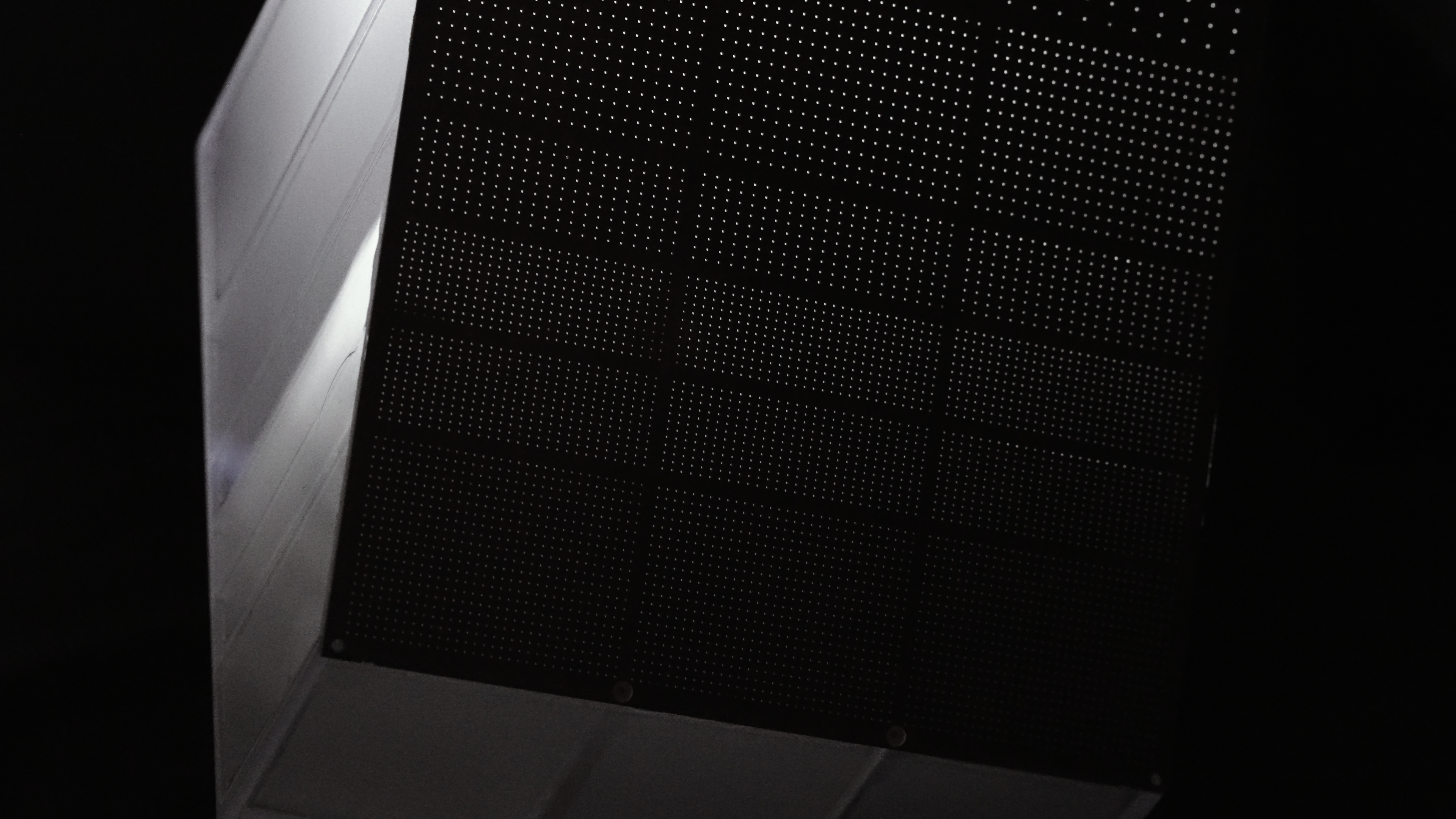

Realization of high sound-absorption in any specific frequency range.
iwasemi™ is a sound-absorbing material developed by applying unique engineering technologies to acoustic metamaterial technologies. iwasemi™ can be applied to various scenes such as construction, building materials, fixtures, railways, automobiles, etc. iwasemi™ has the three features below.
① Flexibility in designing sound-absorption coefficient for each frequency.
② Realization of both high sound-absorption coefficient and thinness.
③ High degree of freedom in material selection and processing
① Flexibility in designing sound-absorption coefficient for each frequency.
Common sound-absorbing materials such as glass wool have the property that the sound-absorption coefficient increases as the frequency increases.
On the other hand, iwasemi™ can realize flexible design of sound-absorption characteristics corresponding to application scenes, such as high sound-absorption coefficient in a specific frequency band or flat characteristics in a wide frequency range.

② Realization of both high sound-absorption coefficient and thinness.
To achieve high sound-absorption coefficient using common sound-absorbing materials, it is necessary to increase the thickness.
Meanwhile, iwasemi™ can increase sound-absorption coefficient without increasing its thickness. In other words, it can realize a sound-absorption coefficient as high as common sound-absorbing materials with thinner thickness.

*Measured vertical incident sound-absorption coefficient according to JIS A 1405 (ISO 10534) in PxDT’s lab.
③ High degree of freedom in material selection and processing.
Common sound-absorbing materials are porous materials such as glass wool. Therefore, design and strength are limited.
In contrast, iwasemi™ is able to use various materials (e.g. ABS (the photo to the left), stainless steel (the photo to the center), acrylic (the photo to the right)) to realize high sound-absorption coefficient based on well-designed resonant structures.
Consequently, it is possible to create the sound absorbing material with design features such as color variations including transparent colors and texture expression using surface treatment, and with sufficient stiffness by selecting an adequate raw material.
In addition, the sound-absorbing material can be molded integrally with applied products to improve their strength and reduce their weight.

ABS (left) / stainless steel (center) / acrylic (right)
Unique sound absorption design technology applying acoustic metamaterial technology
Metamaterials are artificial materials that can achieve properties that is not found in naturally occurring materials by having a fine periodic structure smaller than the wavelengths of the phenomena they influence.
Acoustic metamaterial technologies are the technologies to design and create materials that have unique acoustic properties.
PxDT has a pre-designed library of the basic structures of acoustic metamaterials which are consist of a lot of resonant structures arranged periodically (supercell). We can generate a sound-absorbing material that is corresponding to your needs for each adopting scene by choosing the appropriate supercells and optimizing details of the designing parameters.
To solve the ever-increasing noise problems
Since the Industrial Revolution, with the increase in the number of loud machines and the diversification of our lives with the development of capitalism, we have been plagued by a variety of noises, such as the noise of construction work at construction sites, the noise of transportation infrastructures such as cars, trains, and airplanes, the noise of economic activities such as store sales, and the noise of home life.
In particular, there are reports of a sharp increment in the number of calls to the Metropolitan Police Department because the rapid expansion of remote work in the home due to the new coronavirus infection (COVID-19) has increased noise problems in neighborhood. There is also a growing concern about discomfort and information leakage to and from someone in the next seat or the next room during a meeting with the increase of web conferences in the office. Also, the number of people who consider noise to be a problem continues to increase with the raising awareness of privacy protection.
Thus, the noise problem has become an issue that needs to be addressed, and the expectation for its solution is growing day by day with the rapid changes in our living environment and lifestyle.
PxDT has developed iwasemi™, an innovative sound-absorbing material using computer-aided advanced sound-absorption design technologies to solve noise problems under the vision statement "Digitally Rebalanced.” PxDT will continue to promote the resolution of noise problems in a whole society by adding the basic structures of iwasemi™, expanding the standard products, and developing customized products to meet the noise issues and needs of a wide range of fields.
The concept of iwasemi™
*“Shizukasaya iwani shimiiru semino koe *― In stillness, the sound of cicadas sinks deep into the rocky cliffs.”
This is a noted Haiku composed by Matsuo Basho at a temple in a mountain (Ryushakuji Temple, or Risshakuji Temple in modern pronunciation). The sound of the chirp of cicadas strikes the surface of the rocky cliffs, and faintly echoes. Stillness is a description of the sound space he was in, but it does not mean silence.
The space where Basho was in would not be completely silent, but a lucid space filled with a deep and still sound. Also, this interpretation is reasonable in physics. This is because rocks are very solid, and the difference of acoustic impedance (the acoustic property of the material) between the rock and air is much large, so that almost all the sound does not soak into the rock and is reflected. However, because the surface of the rocky cliffs is uneven, and the high-pitched, short-wavelength sound of cicadas is almost spread in all directions as a diffuse reflection, it gives the impression that the sound is dissipating. The phenomenon must have made such a feeling as if the sound sinks deep into the rocky cliffs.

After 300 years from the time of Basho, his fresh sensibility is no longer the world of a notion. Now, Pixie Dust Technologies proposes a new material that embodies the sensibility, which is iwasemi™.
This one is also composed of a material with the acoustic impedance significantly different from that of air, like the rocks around a temple at a mountain. If the material is used as a lump, the sound never soaks into it and is reflected. However, once you microfabricate the surface and optimize the internal structure, it transforms into an object that the sound sinks deep into it and fades away. Additionally, it cannot only absorb a specific frequency, but remains a slight echo, or controls the echo to have a desired tone by elaborating the properties of the material. Finally, we got to design the sound space freely.

It might be difficult to believe, but this is surely a new technology based on a law of nature, which we call metamaterial. Basho might have created stillness with the material which is lighter than rocks and even composed a completely different Haiku which remains in history if the technology was existing in his time. We live in an age that is full of sound, and sometimes want to feel close to a fine scenery with a quiet stillness, Kakei Jakumaku. Why don’t you create modern stillness with this iwasemi™?